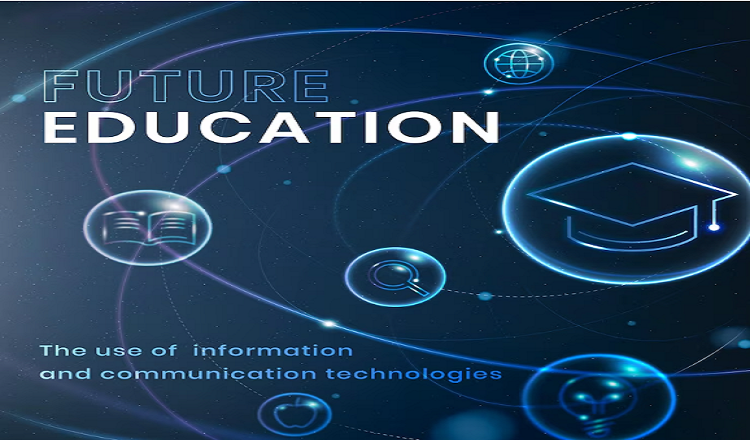Technology’s rapid growth has changed almost every part of our lives, including the way we learn. E-learning, which is also called “online learning,” is becoming more and more popular, especially after the COVID-19 outbreak. It’s more than just a fad. E-learning is here to stay and will continue to push and change the way people learn traditionally in the years to come.
In this article, we’ll talk about the future of e-learning, including the benefits, challenges, and trends that will shape the business.
How does E-Learning work?
E-learning means teaching and learning with the help of computers, the internet, and other electronic devices. It can come in many different forms, such as video lectures, interactive quizzes, discussion boards, podcasts, and webinars.
E-learning is more flexible, convenient, and easy to reach than traditional learning. Learners can access the course materials from anywhere and at any time, which is great for people who are busy or who can’t move around much.
Pros of online learning
E-learning has many perks for both students and institutions. Some of the best things about e-learning are:
Customising and making something unique
One of the best things about e-learning is that it lets you customise and make it your own. Learners can pick the classes that match their interests and learning goals, and they can change the speed and order of the lessons to fit their needs. Institutions can also make individualised learning paths for each learner based on their past learning and what they want to learn.
Not too expensive
E-learning is a cheaper way to learn than standard methods. Institutions can save money on building classrooms, buying textbooks, and buying other tools for teaching. Learners also save money because they pay less for education, travel, and other costs.
Accessible e-learning makes education available to everyone, no matter where they live, what their physical abilities are, or how much time they have. With an internet connection, learners can view course materials at any time and from anywhere. This is especially helpful for people who want to learn but don’t have access to standard learning tools.
Participatory and Interesting
Animations, games, and simulations, which are interactive and interesting, are often used in e-learning classes. This makes learning more fun and effective. Interactive formats can also help people remember knowledge better than standard lectures.
The Problems with E-Learning
E-learning has a lot of perks, but it also has some problems. Among these problems are:
Questions of detail
One of the biggest problems with e-learning is technology problems like slow internet speed, connection problems, and software that doesn’t work well with each other. This can get in the way of learning, make students angry, and make the course less useful.
Not getting along with other people
E-learning can be a solitary process where students and teachers don’t talk to each other much or at all. This can make a person feel alone and less motivated. This problem can be solved by institutions using collaborative learning tools like discussion boards, group projects, and virtual classrooms.
Not Much Feedback
In traditional learning, students get comments right away from their teachers and peers. Feedback can be slow or limited in e-learning, which can hurt the quality and efficiency of the learning process.
Quality of Learning
In terms of how well you learn, e-learning classes may not always be as good as traditional learning. A lack of face-to-face conversations and little feedback can make it harder for people to remember what they’ve learned and put it to use.
How e-learning is changing
The e-learning business is changing quickly, and every year brings new trends and technologies. Some of the most important things that will affect the future of e-learning are:
The process of making games.
Gamification is a way to make learning more fun and effective by using game design features. This includes things like points, badges, and leaderboards that encourage students to finish chores and reach their learning goals.
Augmented Reality (AR) and Virtual Reality (VR)
Virtual reality (VR) and augmented reality (AR) are tools that make you feel like you are in the real world. These technologies can be used to make realistic training settings and get students more interested in what they are learning.
Intelligence made by machines
By analysing student data and predicting their learning needs, artificial intelligence (AI) can be used to personalise the learning experience. AI can be used by institutions to make adaptive learning paths that meet the needs of each student.
Small-scale learning
In microlearning, the course material is broken up into small, bite-sized units that can be finished quickly. This makes learning easier and helps people remember what they’ve learned.
In the end,
E-learning is the way to learn in the future. It has many advantages over traditional learning, such as being flexible, cost-effective, easy to reach, and interesting. But it also has some problems, like technical problems, a lack of feedback, and a lower level of learning. The e-learning business is always changing. Every day, new trends and technologies appear. The education revolution will be led by institutions that respond to these trends and offer high-quality e-learning classes.
Read more You May Like:
- E-Learning for Small Businesses: A Cost-Effective Training Solution
- E-Learning and Gamification: The Perfect Combination for Engaging Learning
- From Novice to Expert: Mastering a Skill Through E-Learning
- The Benefits of E-Learning for Students of All Ages
- E-Learning and Workforce Development: A Match Made in Heaven

